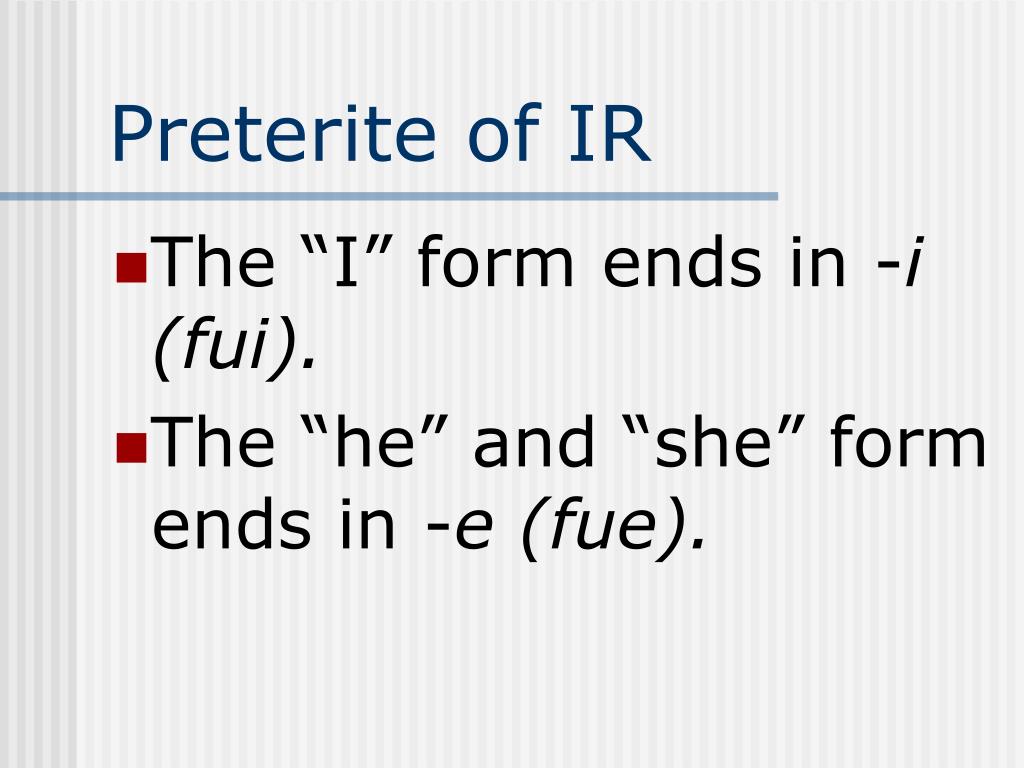

A verb which does not follow these patterns exactly is called an irregular verb. Irregular VerbsĪ verb is called a regular verb when its conjugation follows a typical pattern. The imperfect tense is rarely irregular and can be easily conjugated from this form, which is the yo, and él/ella conjugation. The present perfect tense is formed by combining the auxiliary verb haber with the participio. A must have for anyone who wants to learn Spanish Preterite Tense!īuy Now Ir Conjugation: Preterite Tense yo Juan podía participar en la manifestación.100 Most Used Spanish Preterite Tense Verbs Poster w/ Study GuideĪ selection of the most used irregular and regular Spanish Preterite Tense verb conjugations. In other words, one must eventually forget the verb chart and it must become second nature. Definition to go Additional information Remember: these verb charts are only a tool to use while one is learning the language.
#Preterite endings ir how to
This is not surprising, since the difference in meaning can be traced back to the different way in which these two past tenses are used.Įn aquella época conocíamos muy bien la ciudad. Ir: Preterite Tense Using the chart below you can learn how to conjugate the Spanish verb ir in Preterite tense. Some verbs actually change meaning, depending upon whether they are used in the preterite or the imperfect. Here are the verbs, along with their corresponding stem changes: Infinitive The pattern is that while their stems change, they all take the following endings: There are a number of verbs that are irregular in the preterite that follow a particular pattern. Verbs that end in -ucir are irregular and conjugated as follows: Here are three more verbs that are irregular in the preterite: decir Verbs that end in -aer, -eer, -oír, -oer, and uir change ió to yó and ieron to yeron.There are a number of orthographic changing verbs in the preterite: They change e:i and o:u in the third person, singular and plural. ir verbs that change their stem in the present tense do change in the preterite, but in a different way. They are conjugated just like other regular preterite verbs. ar and -er verbs that change their stem in the present tense do not change in the preterite. Other words and phrases indicate repetitive, vague or non-specific time frames, and therefore signal the use of the imperfect. Hace dos días, años (two days, years ago) Some words and phrases indicate specific time frames, and therefore signal the use of the preterite.ĭesde el primer momento (from the first moment) There are only three irregular verbs in the imperfect: ser Note: This is not a typo ser and ir do have identical conjugations in the preterite! Ser, ir, dar and hacer are irregular in the preterite: ser




 0 kommentar(er)
0 kommentar(er)
